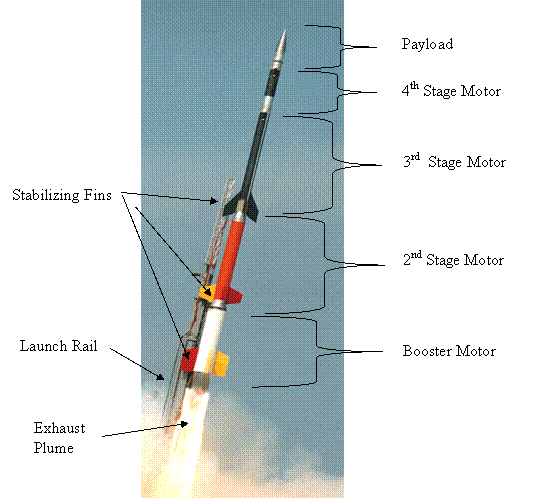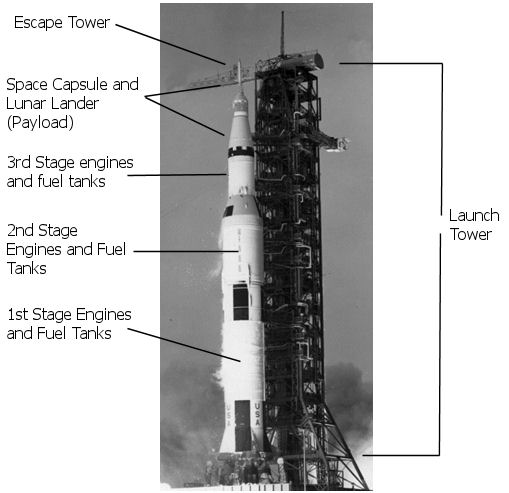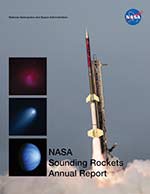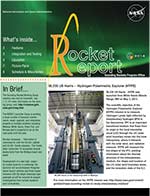Sub Orbital
A sub-orbital rocket is a rocket system that does not achieve the 24,000 feet/sec velocity needed to reach orbit. Sub-orbital rockets follow parabolic trajectories that intersect the surface of the Earth. While sub-orbital rockets may not reach the high velocities need for orbit, they can fly many times higher than orbital rockets. For example, the Black Brant XII rocket (depicted below) can fly to an altitude of 900 miles while the Space Shuttle orbits at 200 miles.

Anatomy of a sounding rocket
The Black Brant XII rocket stands 65 feet tall and produces about 70,000 pounds of thrust at lift off. The fourth stage does not require fins since it is ignited outside the atmosphere. The 5 Hertz spin rate keeps the rocket stabilized, much like a gyroscope.
Orbital
Orbital rockets are large, more powerful, and much more expensive than sounding rockets. Currently, most orbital rockets consist of three stages. Some use strap-on rocket motors to improve performance without actually adding a "full" stage. Most orbital rockets also employ multiple rocket engines on the lower stages. The figure below depicts the Saturn V moon rocket. It stands 363 feet tall and produced 7.5 Million pounds of thrust at liftoff.

Most orbital rockets are not as big as the Saturn V, but they are substantially larger and much more powerful than sounding rockets. Fins are not used on most orbital vehicles, they rely on thrust vector control (TVC) to keep them flying in the proper direction.




